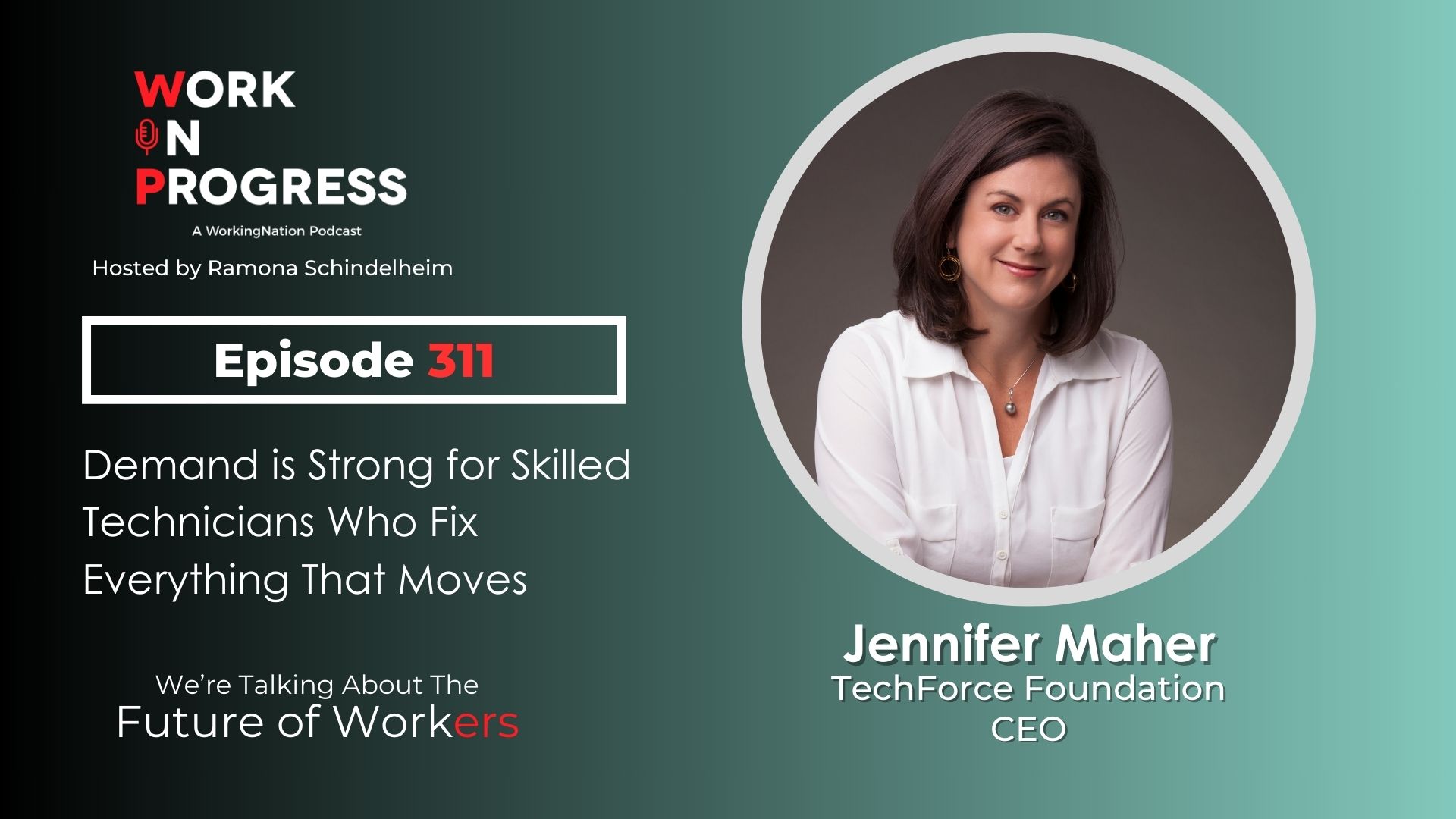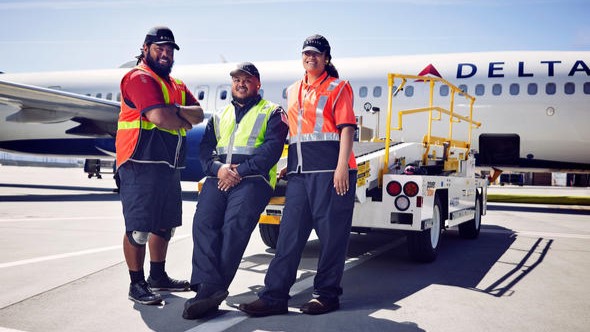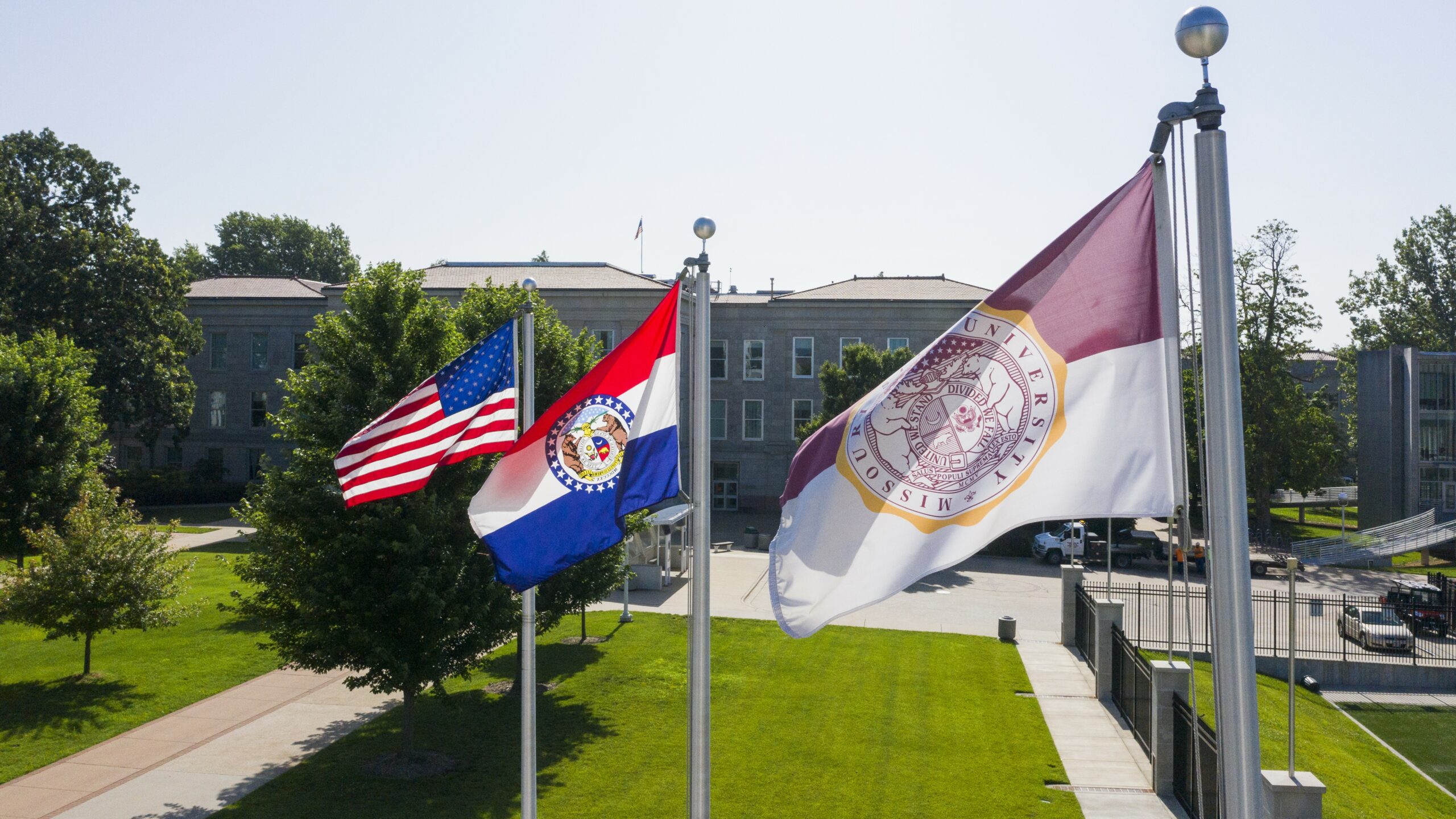During his two-decade career in the U.S. Air Force, 41-year-old Aaron Bowman says he was always thinking a few steps ahead about his career, for when he would need to work in the civilian world. But when it came time to join the estimated 200,00 military members who transition out of the military each year, despite all the thought he had put into it, a big question mark still hung over him.
“When you physically go into the computer system and you click on the application button to opt to retire, it’s a really weird, unsure, nervous-but-exciting moment, because you are deciding to hang up all you’ve known for the past 20 years,” explains Bowman. “At that year out mark, when I applied for retirement, I really had no idea what I was going to do.”
Bowman served for six years as a munitions systems technician and another 14 years in health care. He earned two associate degrees as well as professional certifications. A career in orthotics, a role he held in the U.S. Air Force, seemed logical. Where he would settle was unknown.
Everything changed, though, after he attended the military’s Transition Assistance Program which helps prepare military members for the civilian world. There, he learned about a job program called SkillBridge which proved to be pivotal. The Defense Department runs the program with private sector partners. “A lot of my military friends I reached out to for mentorship had not even heard of this program,” recalls Bowman.
Bridging the gap between careers
In short, SkillBridge can be a pipeline from the military into jobs that are currently in high demand in the civilian workforce.
It’s a federal program offering service men and women hands-on work experience while they are still in the military. It was first authorized by Congress in 2011 and has been expanding since. The U.S. Defense Department works with dozens of private partners to offer training, apprenticeships, or internships to service members during their last 180 days in the military. It’s a voluntary program, and the service member must get permission from his or her unit commander in order to participate.
Crossing the DOD ‘SkillBridge’
Retired Marine Corps Gunnery Sgt. Joshua Ladd is just one of many taking part in the Department of Defense SkillBridge Program. In partnership with dozens of companies, service members are allowed to spend up to their last 180 days on duty working in an internship or training program that can lead to a post-military career.
Nine thousand men and women took part in the program in the fiscal year 2019, with 85 percent getting a job as a result. The year before that, 8,000 members took part and 83 percent got hired, according to numbers provided by Department of Defense spokesperson Jessica Maxwell. She notes that some of the programs only provide training and some service members decide to take jobs outside the program or pursue higher education.
A period of adjustment
One specific SkillBridge partner program is geared toward management-level corporate positions and it’s run by the U.S. Chamber of Commerce Foundation’s Hiring Our Heroes. That is how Bowman landed a 12-week fellowship program in May of 2018 at Arrow Electronics in Centennial, Colorado.

“When you go to work with a company, you either shadow or you dive into the work by doing actual work, which is my case. It just gives you a really good perspective of what it’s like to work in a civilian corporate world,” Bowman tells WorkingNation.
Learning how to communicate in the corporate world was very different from what he was used to in the military. “When you are in the military, and you’re wearing a uniform, it’s very easy and quick to identify someone’s experience because you can see the rank on their sleeve or their collar. You can see the career field badge, their name,” says Bowman.
“Then, when you look at the civilian world, you don’t have any name tags, you don’t have any rank,” explains Bowman who says he had to adjust to this unknown and force himself to interact with people in a way he didn’t have to do in the military.
A pathway to employment
The job itself, he says, wasn’t all that different from what he did in the Air Force as a project manager. “Our team was basically like an internal consulting team. We were experts in process improvement, project management. That was our forte,” Bowman adds.
Going in, Bowman knew a job offer at the end of the 12 weeks was not set in stone. “It’s a goal for the program, but not a guarantee.” For Bowman, that goal turned into a reality. He was offered a position at Arrow Electronics and began working before he officially retired from the Air Force in November of 2018.
Bowman credits the “intangibles” of his military training for getting hired. “It’s not necessarily the hard skills you were trained to do for a specific job. It’s those tertiary skills that the military gives you that comes with your rank and your level of leadership.”
Companies see the benefits, too
Asked to rank the top three most valuable skills he learned in the military, public speaking tops Bowman’s list — a skill he learned having to do briefings, meetings and, in his case, teaching courses. Second on his list? A positive attitude.
“In the military, it’s never an option to say no. When you are asked to do something, you have to get it done. In the civilian world, that’s not really the case sometimes,” he adds. Building and leading teams are also in the list of the most valuable skills he learned in the military.
While Arrow Electronics says it doesn’t provide statistics on employee hiring, John Hourigan, vice president of Global Communications at the company, says “enthusiasm for the Corporate Fellowship Program continues to build at Arrow and (they) are excited to see it increase each year.”
He says the fellowship “provides a unique opportunity for service members to gain valuable corporate experience, and Arrow benefits from the diversity of thought and experience these service members bring to the table.”
Diversity is attractive to other companies like Amazon Web Services (a subsidiary of Amazon) which also participates in the corporate fellowship program. “The military community is composed of individuals from different cultures, backgrounds, experiences, and personalities, and because of this, veterans bring diverse perspectives and great leadership skills to these new civilian roles,” says Nick Curry, senior manager of AWS Military Recruiting.
Curry says AWS has hired dozens of program participants since 2017 in various jobs “from tech to program management, many roles are well suited for members of the military community and we look for opportunities that match their individual skill sets.”
Veteran jobs picture
The Corporate Fellowship initiative is just part of the broader SkillBridge program which includes a range of training opportunities that vary in length and qualifications for eligible service members.
All of it is aimed at easing the transition for service members into the civilian workforce. Veteran unemployment reached 9.9 percent in 2011 and since then it, along with the non-veteran unemployment rate of 9.2 percent, has seen a steady decline.
In October, the unemployment rate for veterans was 3.2 percent, lower than the overall civilian jobless rate of 3.5 percent, according to the Department of Labor.
While the jobs picture has improved for veterans, advocates warn that it’s key to prepare service members for that transition to the civilian workforce.
A successful military transition
And Bowman, now a global project manager at Arrow Electronics, is unequivocal when asked if he’d have his job today without the fellowship program.
“Absolutely not. I really don’t think there’s any way possible that I would have considered a company like Arrow Electronics. Nor would a company like Arrow Electronics consider me who’s got six years of munitions experience and 14 years of health care. I’m so glad I did it. I love the work I do.”
Follow more of our Vets Deserve Good Jobs coverage here.











